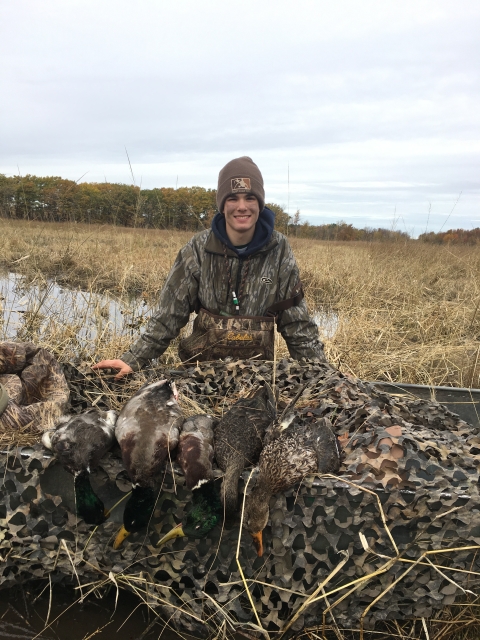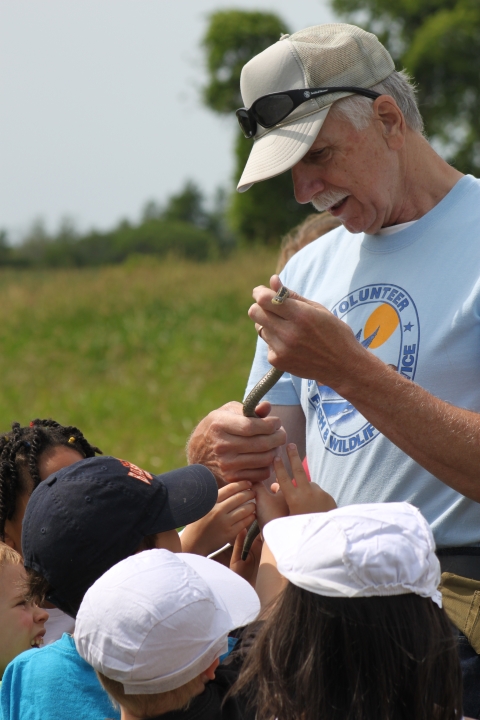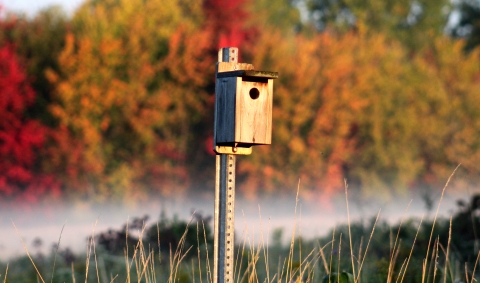Facility Activities
Hunting
Big game, upland small game, and water/other migratory bird hunting are allowed on portions of the refuge. Big game and upland small game both require an annual $10.00 permit. Waterfowl hunting is provided in both controlled hunt areas and public hunt areas. Controlled hunt zones may require a $10.00 permit during a portion of the waterfowl season, but public areas do not require a permit.
Youth waterfowl hunt opportunities are available at Missisquoi National Wildlife Refuge during the Vermont Youth Waterfowl Weekend and during the first 3 weekends of the regular waterfowl season.
Migratory Game Bird Hunting Map & Regulations (pdf)
Upland Game / Big Game Hunting (pdf)
2024 Controlled Waterfowl Hunt Dates
FISHING
The warm shallow water of the Missisquoi Delta provides excellent fishing opportunities on and around the refuge. Refuge boat launch facilities at Louie’s Landing and seasonally at Macs Bend allow boaters quick access to the river and Lake Champlain. Please be aware that some areas on the lake are closed to fishing. Paddling through flooded forest habitat along the river is prohibited during high water to reduce disturbance to migrating birds. Click here for a map of areas closed to boating and fishing access.
WILDLIFE VIEWING
Five refuge trails encompassing 7.5 miles provide excellent opportunities for wildlife observation in many different upland and wetland habitats. Numerous boardwalks on these trails allow quiet, elevated access through wildlife habitats to see migratory and resident species. The refuge delta, Missisquoi River, Dead Creek, provide a water rich alternative to observe wildlife on the refuge. Please note the Jeep Trail is open seasonally from August 1-April 1 only. This seasonal closure protects migratory birds and other wildlife during the breeding season. Kayaks, canoes, and small motorized boats allow access to the refuge in areas where trails are not available.
All trails are closed during the rifle and muzzleloader deer seasons with the exception of Black and Maquam Creek trail.
Refuge trails brochure (pdf)
Bird brochure (pdf)
Black Creek & Maquam Creek Nature Trails brochure (pdf)
INTERPRETATION
The refuge hosts annual events such International Migratory Bird Day on the third Saturday in May. This event is coupled with a refuge open house and art display featuring local artists and photographers. The Junior Waterfowl Hunter Training program is provided on the third Saturday in August. This activity provides expert instruction both indoors and outdoors for young waterfowlers age 12-17.
The first Saturday in May is Refuge green Up Day during which staff and volunteers conduct a cleanup of refuge waterways.
The Friends of Missisquoi NWR provide Monthly bird walks on the third Saturday of each month. Bog walks, Vernal Pool walks, Owl Prowls and other events occur seasonally during the year. Check the Friends of Missisquoi NWR's website for more information: https://friendsofmissisquoi.org/
Environmental Education
The Refuge HQ offers a large classroom for schools, summer camps, and other groups complete with audio/visual projection. Displays and exhibits are available in the HQ building as well. A hiking trail begins at the south entrance of the HQ building and offers educational opportunities to discuss green energy, macroinvertebrates, grassland habitats and a variety of other subject matter with students. The refuge provides outdoor classroom experiences to local schools and summer camps.
We invite you to explore and use Missisquoi National Wildlife Refuge as an outdoor classroom. Located near Swanton, we have 5 trails to discover, ponds for studying insects and water quality, as well as a modern visitor center with classroom facilities. There is no fee to use the refuge. We suggest education trips be conducted late May through early October. I
We have developed an Educator Guide to help you facilitate a trip to the refuge. You will find everything you need to guide your students though an immersive and hands on experience. We may also have a limited number of spaces for a staff-guided education programs. Please contact us to find out more. Additionally, education materials are available to borrow for use at the refuge or in your classroom.
Photography
Spring, summer and fall are the best times for photography at Missisquoi. These time periods provide opportunities to photograph both resident and migratory species. Winter wildlife most likely to be observed include pileated woodpeckers, whitetail deer, and chickadees. Spring and summer bring numerous migrants including a variety of waterfowl species, great blue herons, eagles and osprey, a variety of migrant songbirds are also present. Fall colors usher in returning concentrations of waterfowl as well as northern breeding songbirds as they move toward southern wintering areas. Photography from watercraft along the Missisquoi River and other adjacent water bodies is also productive in the spring, summer and fall.







